Frank’s Zoo is a classic card game that was first published in 1999. It’s a simple game of trying to get rid of your cards, but you can only get rid of cards depending on what cards the players ahead of you place down. The game can feel similar to The Great Dalmuti, or Tichu. This particular version has lovely animal illustrations and is easy for kids to learn and play. My kids figured out how to play after one game and continue to want to play it over and over again. Frank’s Zoo is for 3-7 players and plays under an hour, and is published by HeidelBÄR Games.
What’s in the Box?
- 60 Animal Cards
- 12 Point Cards
- 7 Team Cards
- 2 Teamplay Overview Cards
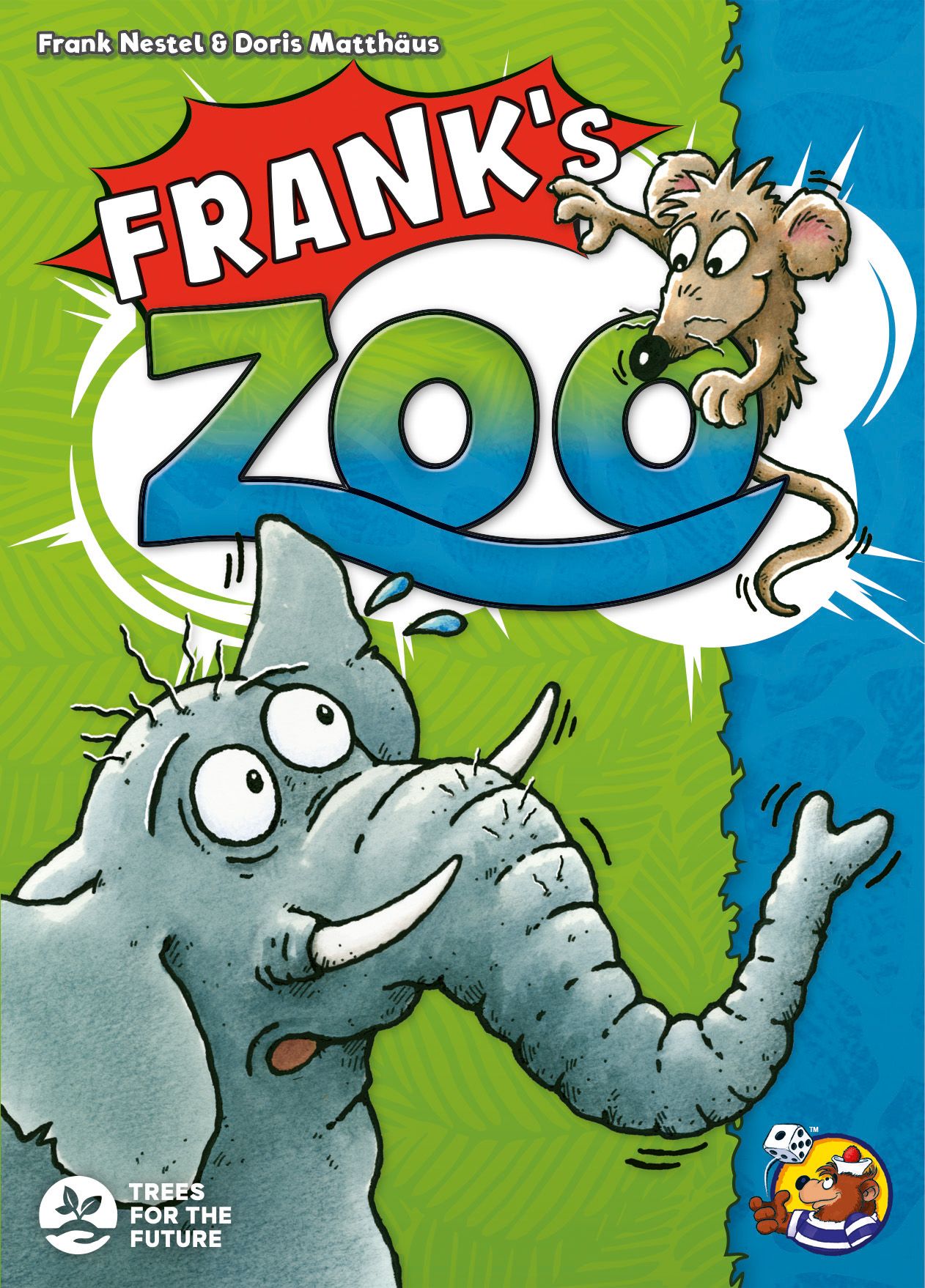
How’s it Play?
You choose how you want to play: everyone for themselves or team mode, where players team up and face off against the others.
You place the point cards numbering from 2 to the number of players you have in the game with the highest number on top. These are points you score for discarding all your cards. The first to do so takes the top card worth the most points.
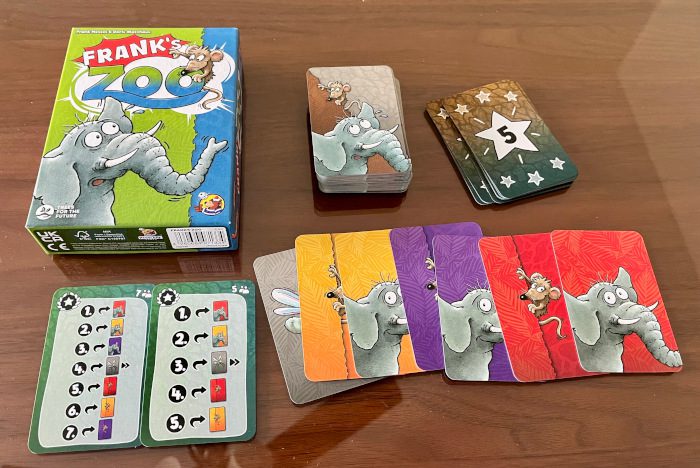
All 60 cards are shuffled and dealt out to the players so that all players have the same amount of cards. There may be some players that have a card more than other players, and that’s OK, it can happen with different player counts.
The first player leads by placing out 1 or multiple of the same species out on the table. In a clockwise manner players need to either outnumber that player’s card by playing out the same species but with exactly 1 more than they did. Or, you can outrank them by placing out the same number of cards, just of the species shown on the top of their card. Almost all species have a certain species that outranks them, and players continue placing out cards to get rid of the cards in their hand. If you can’t play then you pass. If everyone passes and it comes back to the player who placed out cards, they collect all the cards that have been placed out thus far and restart with a new lead card.
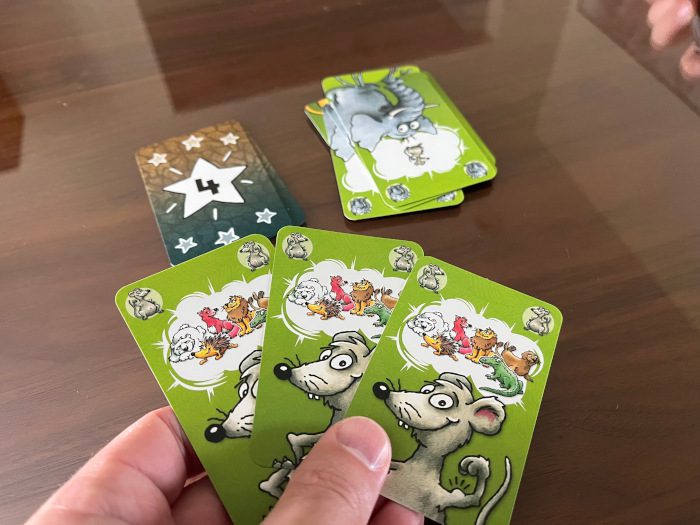
The player who plays all their cards then takes the top point card. There are some special cards that let you be sneaky and play cards a little differently. The chameleon can be added with a group of cards, as it’s like a wild, meaning it acts like the species it’s played with. The mosquito can be played in its own set, or it can mimic an elephant and count as an elephant.
Rounds continue with the player who didn’t score any points beginning the next round. After a set amount of rounds, for example 3 or 5, whoever has the most points at that time wins the game.
You can learn to play the game as a team adding in the team cards, and working together handing off cards to be able to do better in the game.
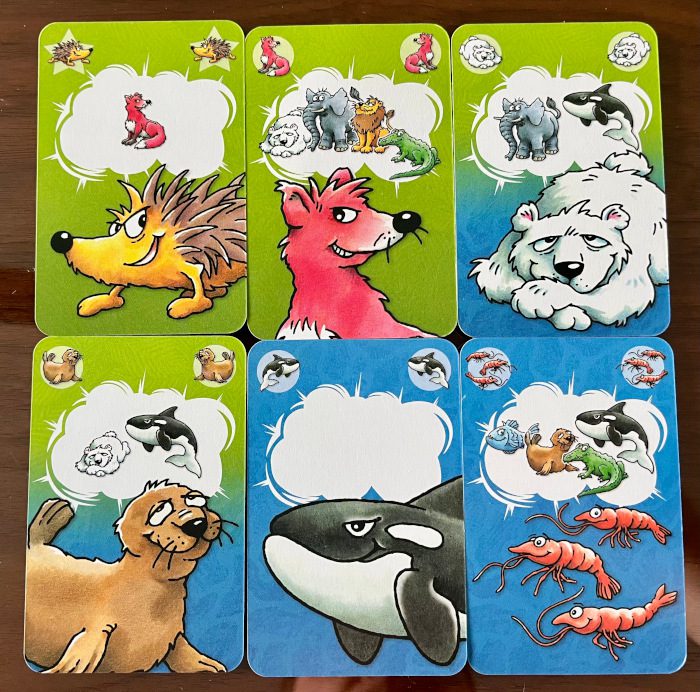
The Verdict
Overall Frank’s Zoo is a classic game of shedding your deck of cards the fastest, and placing out species in a way to help you continue to get rid of your cards to win. You can think of the game as a trick taking game, although it’s not really a trick taking game since you are just trying to get rid of your cards first, it doesn’t matter how or where the cards go.
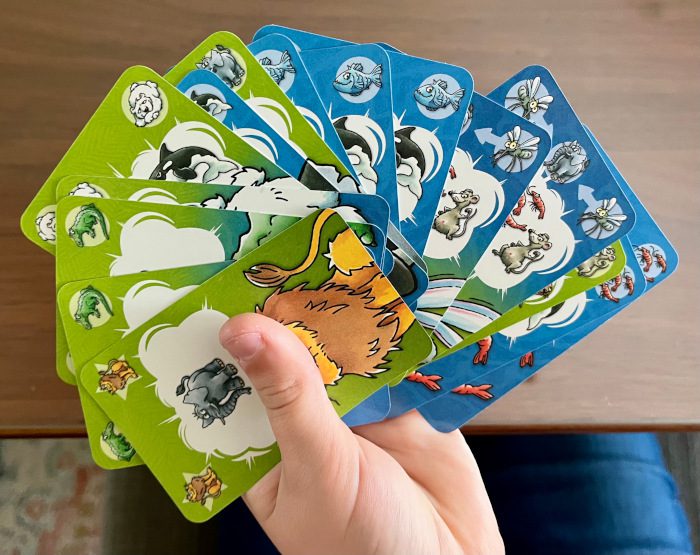
The cards don’t have numbers, rather you need to figure out how to use your strong or weaker species in a way to place out cards, but maybe still have options when your turn comes back around. There are multiple ways you can go about this game, deciding to place certain species that outrank the current species, or to keep the same species out and place one card more than the current set. This also makes it harder for the following player to have to play the same amount of cards of an outranking species.
Frank’s Zoo is already a classic, as its been around since 1999, so it has 26 years of success, and might continue to do well as the system of beating cards isn’t exactly linear, but some cards can be beaten by multiple different species, and others just a certain type. The killer whale is the strongest, as no species can beat it, so if you need to reset, play the killer whale, even if it’s just one of them at the beginning to reset and start the round off with another card.
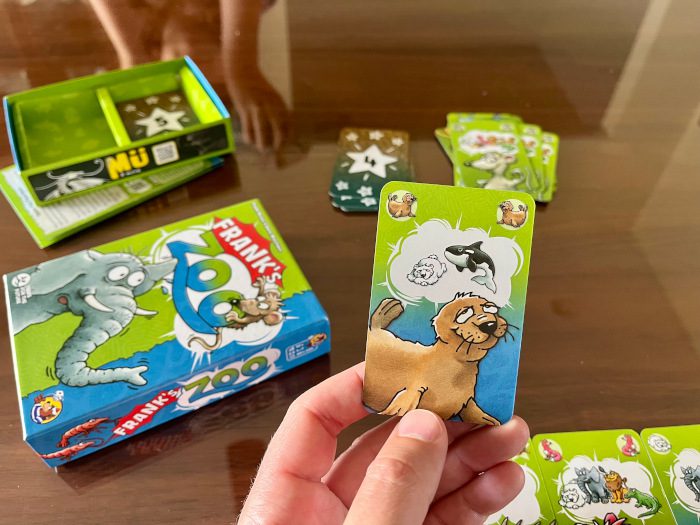
It’s a good game for our kids, it’s super easy to learn and play. The kids will be asking to play this one over and over again because of that.
Images via HeidelBÄR Games
Have strong thoughts about this piece you need to share? Or maybe there’s something else on your mind you’re wanting to talk about with fellow Fandomentals? Head on over to our Community server to join in the conversation!

